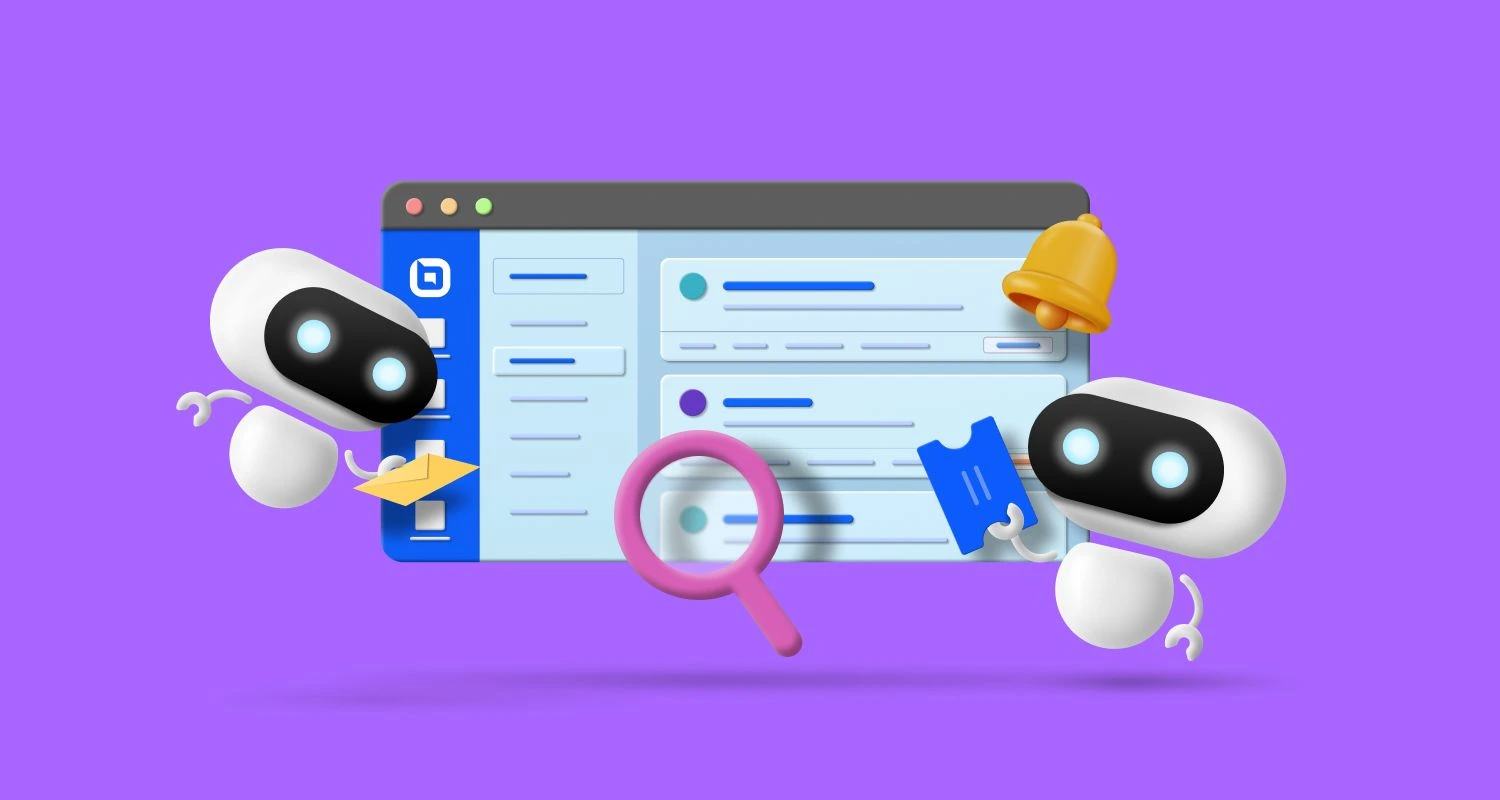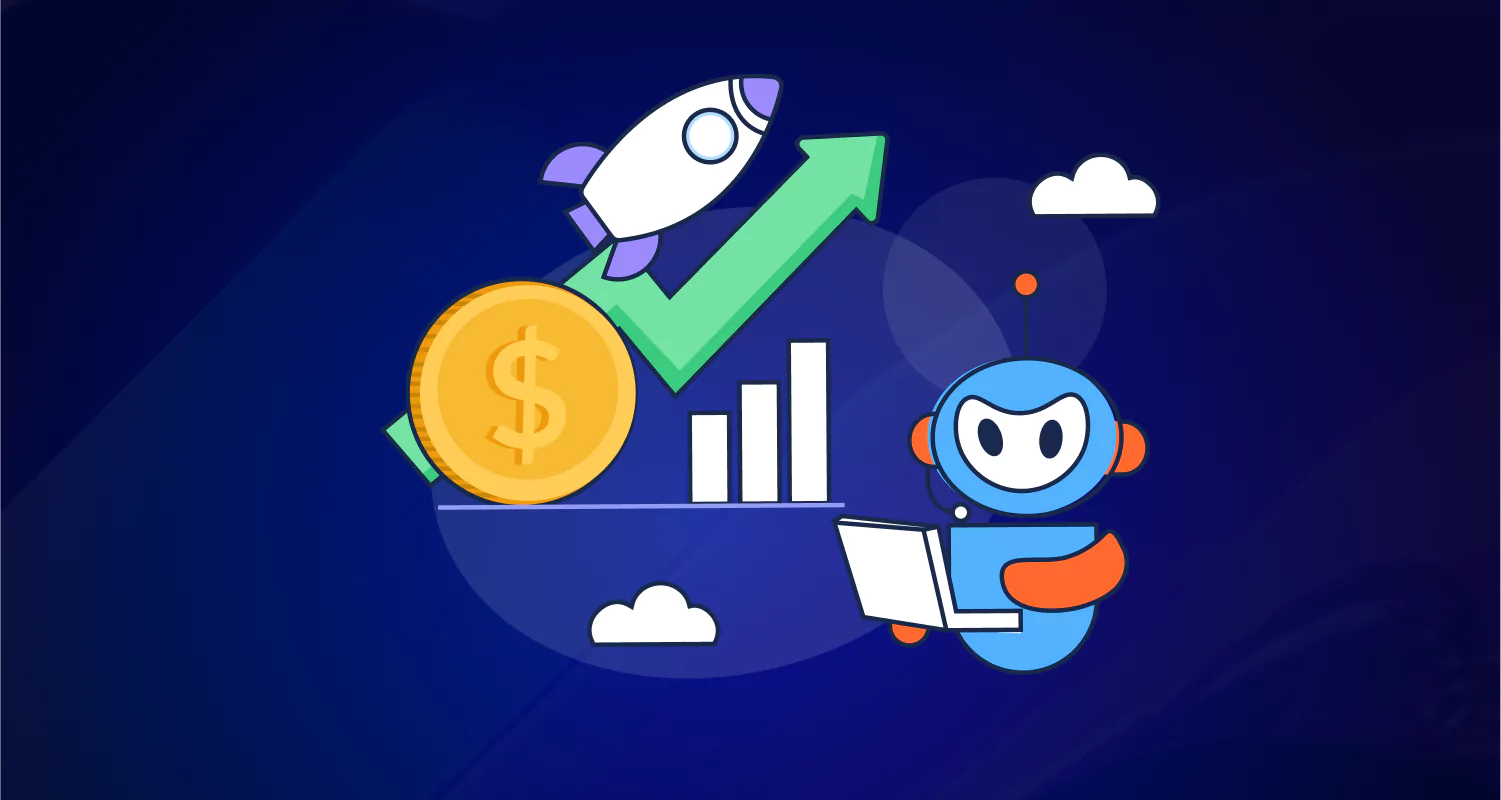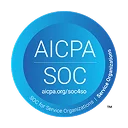To provide the best customer service, provide good help desk automation ideas that will improve workflow. Your team will be more organized and get more done, while more of your customers will receive solutions to their issues fast.
In this article, we will review some good help desk automation ideas. We will also discuss the qualities of good help desk workflow automation.
What is help desk automation?
Help desk automation refers to the use of digital tools to perform customer support operations that were manual before. It streamlines the help desk workflow by automating its functions and features.
Its main purpose is to provide customers with the best experience and reduce the effort of the support team. As a result, the support team will be more productive.
Advantages of service desk automation ideas
Help desk workflow automation has many benefits for the customer service team of any company. Automating your service desk ensures customers receive the best experience with the least effort put in by your support agents.
In addition, help desk automation significantly reduces operational costs.
A study by BMC revealed that the expense of manually managing a service desk ticket is $22. However, using automation, users can resolve 22% of total service desk tickets at practically no cost.
Other benefits that service desk automation yields include:
- Fast response and resolution times
- Reduced human errors
- Reduced operation costs
- Improved customer satisfaction
- Improved client loyalty
Help desk automation ideas that boost productivity
Having the right features in your service desk ensures that all client issues get responses and are resolved in a timely fashion. The following are 10 IT support workflow automation ideas to use in your help desk.
1. The ticket routing process
Automated ticket routing refers to the process in which automated service desk software will categorize and tag new incoming tickets and then assign them to agents using a round-robin method.
For instance, all the new support emails automatically convert into tickets in the ticket creation process.
The ticketing system examples in ticket-processing make use of automation ideas such as to:
- Organize and tag new tickets.
- Assign tickets in a round-robin method.
- Route tickets.
- Prioritize tickets.
Based on the ticket priority or tags, agents can pick and focus on more urgent customer issues or tasks first, which helps improve agent productivity.
2. Closing expired and long-pending tickets
Sometimes, agents can ask their clients to provide more information that can help them resolve their tickets faster. When the client fails to respond within a set target time and the ticket remains in a pending status for too long, the ticket can be set to auto-close.
This auto-closure happens based on time-trigger rules. If the client responds after the ticket is closed, the ticket will automatically reopen.
In addition, if an agent resolves an issue and the ticket remains in a solved status for more than a set time period, it will be auto-closed.
This auto-closure reduces the task list clutter and saves agents time used in manually reviewing and closing the tasks.
3. Sending CSAT surveys to ask for feedback
Collecting data for key customer experience metrics like customer satisfaction score and net promoter score will help your customer service team improve and grow its impact.
Ideally, after an issue is resolved and the ticket is closed, an automated customer satisfaction survey should be sent to the client.
This CSAT survey aims to collect the view of the client on the quality of either their interaction with the support team or the products or services they purchased.
CSAT surveys can be set to send automatically as survey links via email after every response or after the ticket is resolved.
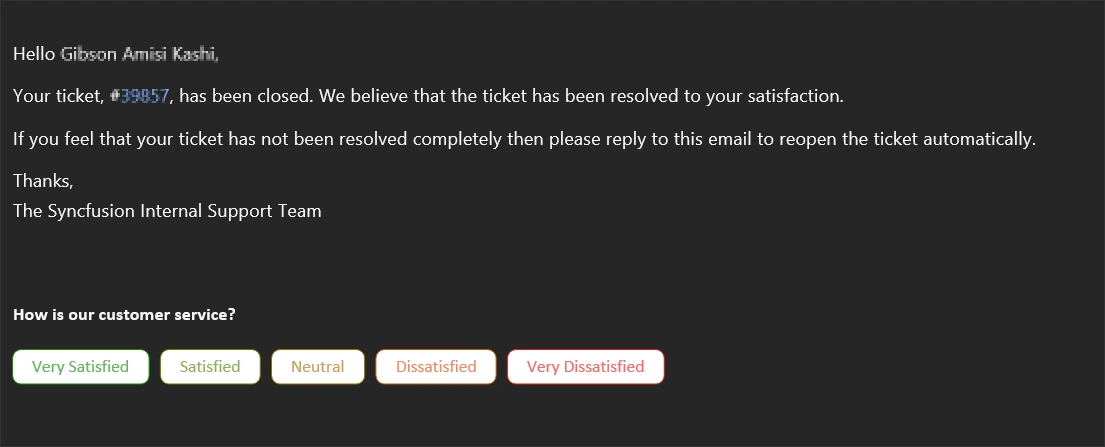
This feedback from clients will help you:
- Determine how your agents perform.
- Gauge the overall customer experience
- Identify areas that you need to improve.
4. Evaluating the team productivity levels
Support leads need to monitor and evaluate how agents perform. The manual collection of the data sets can be tedious.
With the right help desk platform, they can automate some processes to make the reports faster.
Support leads can automate the collection of data and have reports created from it every month or week. For example, they can analyze metrics like:
- The number of tickets logged by agents
- Billable and nonbillable time
- Feedback scores
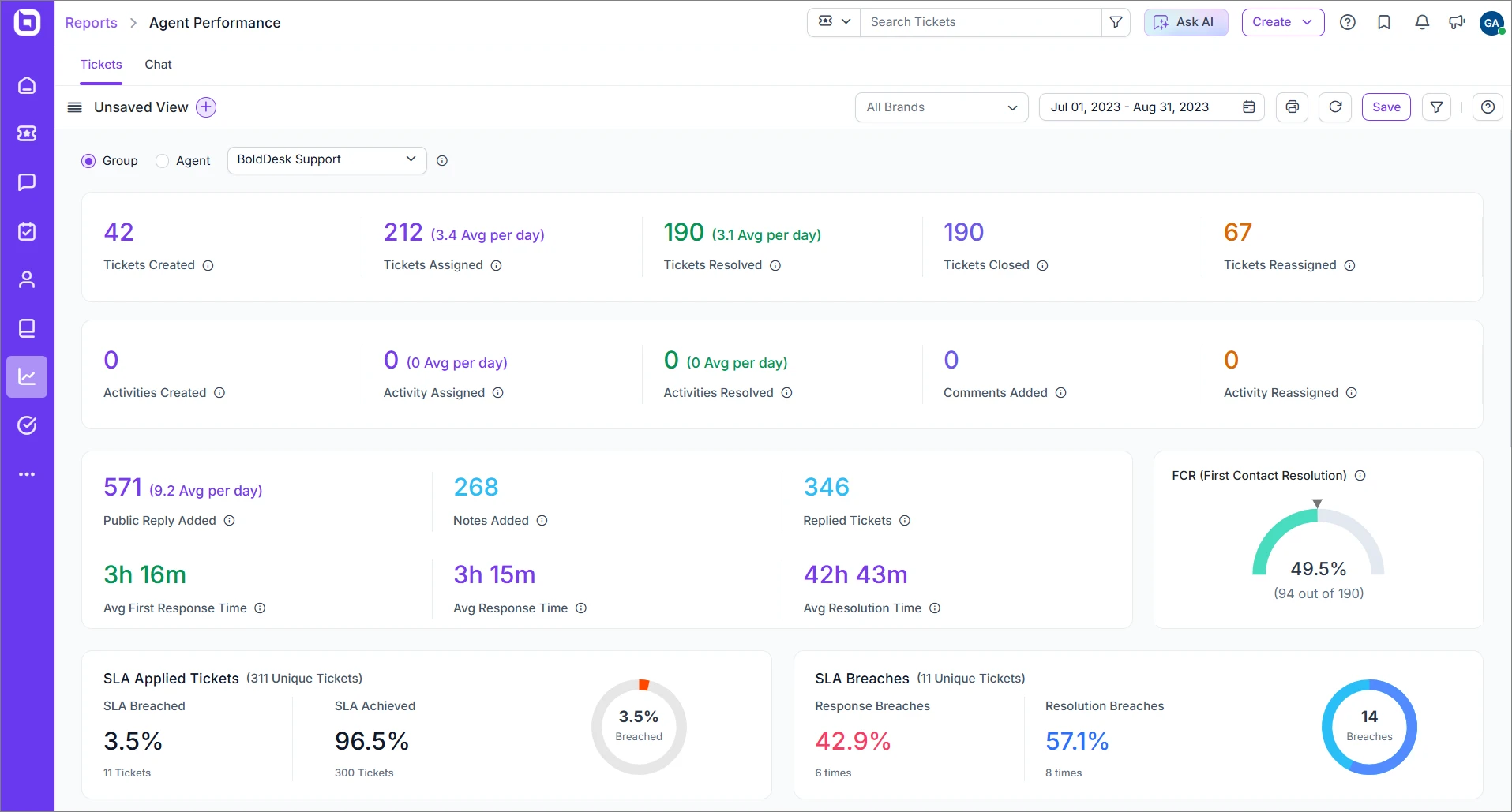
5. Self-service options
Offering self-help options is a good strategy for companies to retain and satisfy clients. To enhance user experience, consider automating your self-help tools.
For instance, you can automate a knowledge base and use it as a self-service tool in your service desk. An interactive knowledge base serves as a central source of information for both agents and clients.
It can use help desk automation tools such as auto-search and auto-suggest features. In an instant, they provide all search results and options relevant to the specific keywords the users typed.
Some ideas to improve your knowledge base automation are:
- Optimize keywords to help instant search and auto-suggest functions
- Add tags to articles
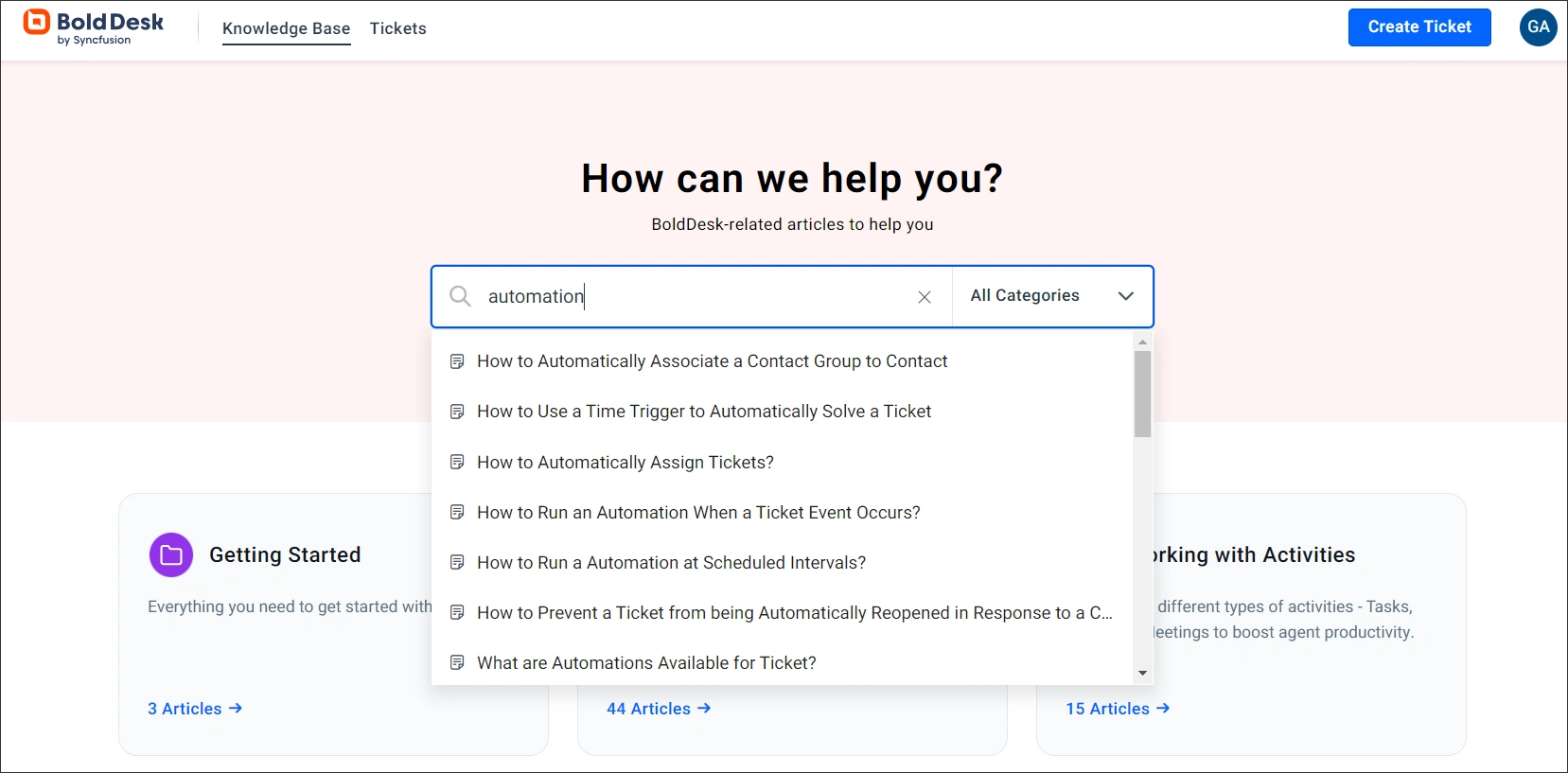
6. Automated alerts and notifications
Automated alerts and notifications for agents and clients ensure prompt responses and resolution of issues.
With IT help desk automation, agents receive alerts when clients respond to their requests for more information.
These alerts and notifications enable agents to resolve or respond to clients quickly and in real-time.
Support leads can also receive alerts on negative feedback from clients. They can then take the necessary steps to improve the areas of concern.
For instance, they can train their agents to perform better or alert product teams to fix features that receive complaints.
7. Escalate late tickets
If an agent fails to respond to a ticket within the set response or resolution target time, the SLA will be breached.
As a result, an automated escalation alert can be triggered and sent instantly after the due date passes.
The support lead can choose to reassign the task to another agent or ask the originally assigned agent to prioritize the late issue.
These escalation alerts ensure no tickets are left unsolved and no client is left to become irate at the wait time.
8. Automate the customer follow-ups
Customers can get automated, regular updates on the progress of their tickets after a set period of time. These automated updates are sent based on specified time-trigger automation rules.
Any changes made to the status of tickets can also trigger an update to be sent to the client to notify them of it, too.
These regular updates boost the confidence of the clients in the company and its brand. They enhance customer satisfaction and increase the chances they will leave positive feedback.
9. Enhance the help desk through integrations
Companies can integrate their service desk with other favorite tools and third-party apps, after which, the IT service desk automation features should work seamlessly.
When companies integrate external tools, it makes their work more efficient. For instance, apps like Jira, Microsoft Teams, Zapier, and Salesforce can be integrated.
All these added tools help agents do key tasks in a central place. As a result, they help to make the workflow simpler and reduce data clutter.
10. Automated service level agreement (SLA) reminders
In addition to support leads being notified when a ticket passes its SLA-mandated due date, agents can receive automated, SLA-based reminders before the ticket’s due date.
These SLA reminders can be sent for the following SLA metric targets:
- First response
- Next response
- Resolution
These automated reminders aim to:
- Speed up the customer support process
- Keep clients in the loop and calm
- Keep agents on track
- Ensure tickets with lower priority are not pushed to the back of a queue for too long.
Features of automated help desks
An automated service desk workflow requires key qualities in order to be effective and ensure the clients are satisfied.
Simple and easy-to-use interface
The help desk automation tools used in a ticketing system workflow need to be user-friendly. For instance, new support emails from clients should automatically convert to tickets with no effort.
Clients and support agents should also be able to track ticket statuses using automated alerts set up with just a couple of clicks.
Agents should be able to resolve repetitive ticket issues with ease. With automated self-service tools like the knowledge base, relevant information becomes easy to access, copy, and paste.
Reliable and secure service desk automation features
Automated help desk platform features should always have a high level of security. For instance, suspended and spam emails should not convert into tickets during ticket processing.
The IT help desk ticketing software should automatically block the emails suspected to be harmful. Agents will have to evaluate them first and decide whether to create a ticket or not.
This security feature helps to protect the information of clients and the systems of a company.
Customizable features
You should have the option to customize your help desk’s automation. One example of IT automation ideas is customizing ticket processing.
Even though ticket distribution is through a round-robin ticket assignment process, you can set your system up to tag tickets from priority customers or with certain keywords.
Tickets with certain tags will be assigned only to certain agents. This allows ticket assignment to the right agents for fast resolution.
Challenges in implementing help desk workflow automation
Service desk automation provides considerable benefits, but organizations must tackle certain obstacles to guarantee successful implementation.
One essential aspect is striking the right balance between automated processes and human engagement. Although automation enhances productivity, personalized and empathetic customer support remains vital.
In addition, it is crucial to engage experts in implementing help desk automation, considering that 88% of automation initiatives report technical complications.
Harmoniously incorporating automation into current systems, safeguarding data security, and managing customer expectations are significant challenges that demand careful planning.
5 Best help desk automation tools for your business
Let’s delve into the top five help desk solutions renowned for their outstanding automation capabilities.
1. BoldDesk
BoldDesk is cloud-based customer service software with features that empower businesses of all sizes to automate recurrent manual tasks to improve their support team’s productivity and enhance their efficiency.
Team leads can set up automatic SLA-related notifications and escalations, as well as the sending of feedback surveys when agents close support tickets.
The ticketing system automatically prioritizes tickets, assigning them round-robin style unless specified keywords are triggered. The system routes those tickets to agents with specific authority and training.
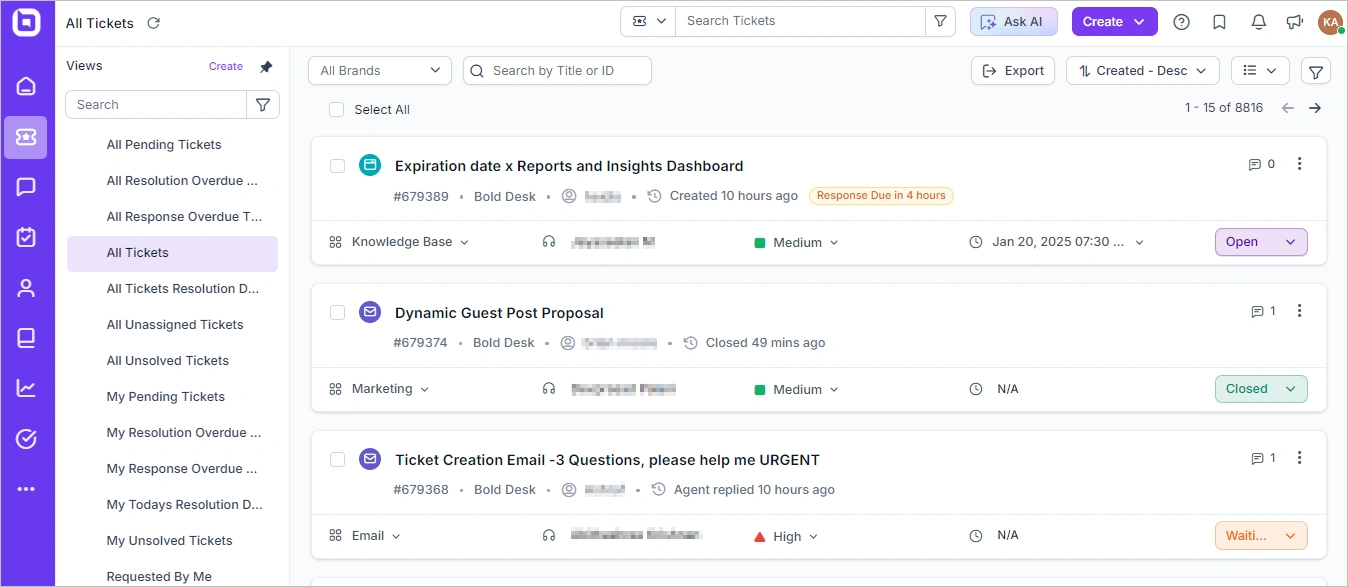
Features
- Automated help desk
- Intelligent ticketing system
- AI-powered help desk
- Robust knowledge base software
- Live chat software
- Omnichannel inbox
- Seamless integrations
- Multilingual help desk
- Insightful analytics and reporting
- Unlimited customization and branding
- Automated SLA reminders and escalation rules
Pricing
- Scale: $12/agent/month
- Momentum: $25/agent/month
- Enterprise: $39/agent/month
No per-agent fees! Pay only for the tickets you handle, starting at $99/month for 500 tickets.
Find the three options:
- Essential: $99
- Pro: $199
- Business: $399
Free trial: 15-day free trial with instant access; no credit card required. Contact us to set up a 30-minute live demo to see how BoldDesk can revolutionize your customer service.
2. Salesforce Service Cloud
Salesforce Service Cloud is a customer service tool that provides AI-powered workflows and automation throughout the customer journey. It allows users to gather all interactions into one place and get real-time updates from across multiple data sources.
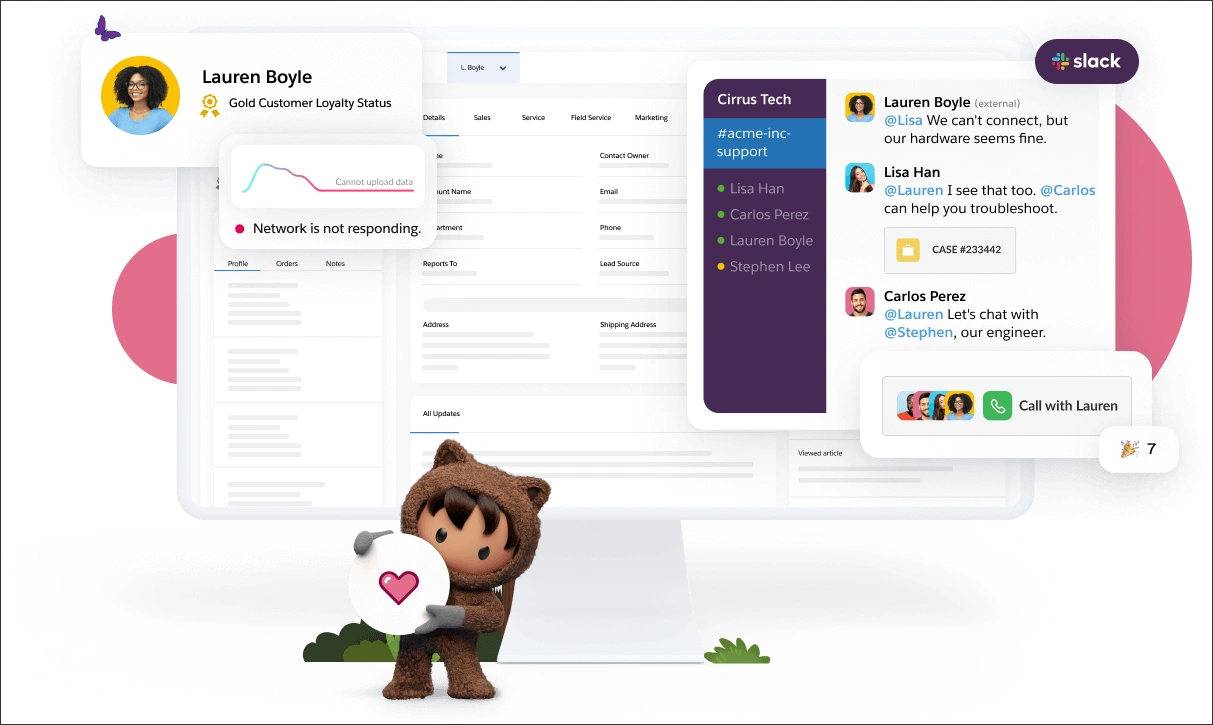
Features
- Omni-channel routing
- Case management
- Reporting and analytics
- Email integration
- AI-powered customer service
Pricing
- Starter: $25 per user/month
- Professional: $75 per user/month
- Enterprise: $150 per user/month
- Unlimited: $300 per user/month
- Unlimited plus: $500 per user/month
Free trial: 30 days
3. Zendesk
Zendesk is a customer service platform that provides businesses with tools for ticketing, issue tracking, and customer service support. It features automation tools that can manage customer interactions, ticket routing, and responses based on certain triggers and conditions.
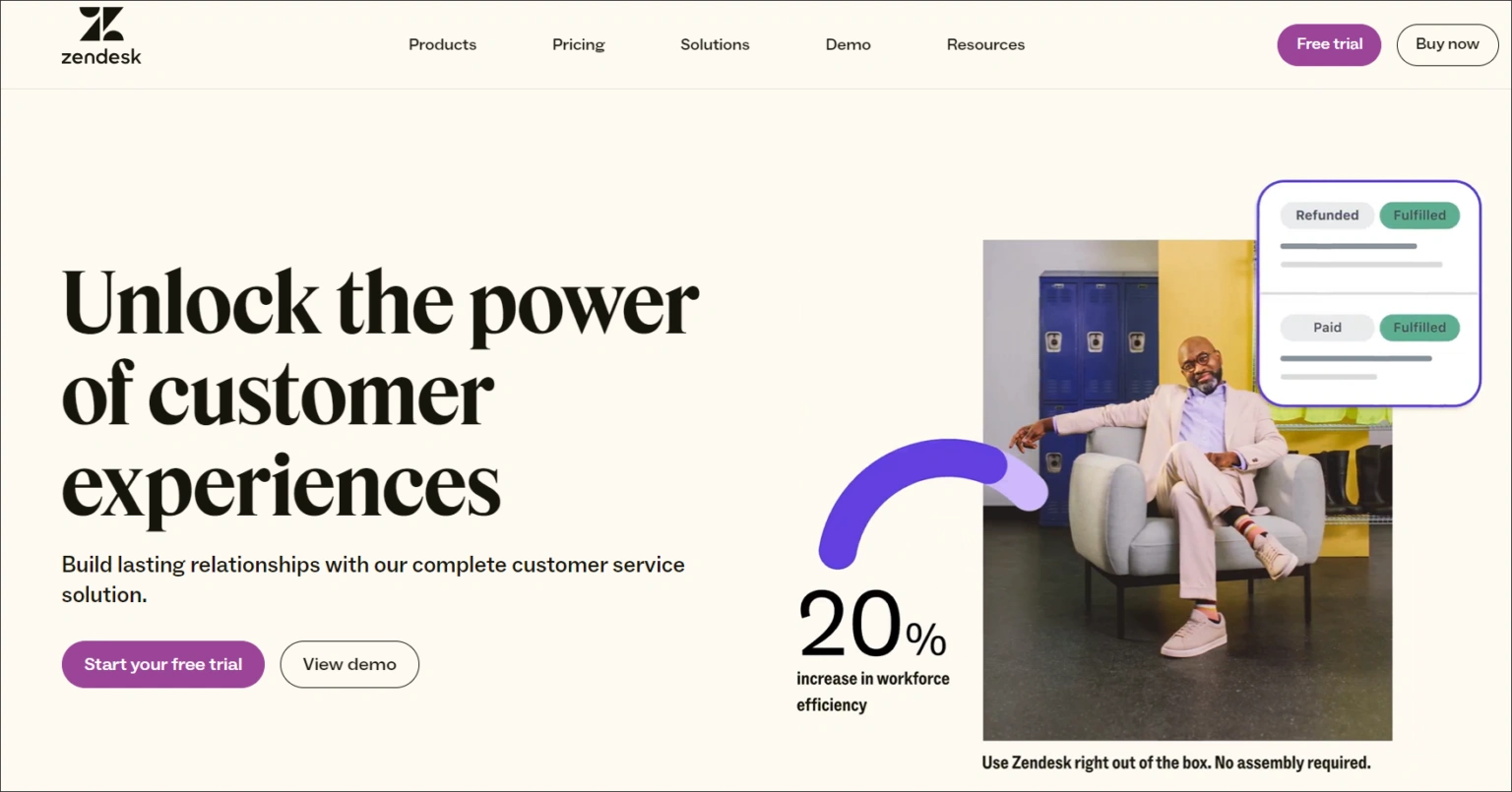
Features
- AI-powered automated answers
- Ticket routing
- Reporting and analytics
- AI-powered knowledge management
- Multilingual support and content
Pricing
Foundational support
Team: $19 per agent/month
Professional: $55 per agent/month
Enterprise: $115 per agent/month
Zendesk Suite
Team: $55 per agent/month
Growth: $89 per agent/month
Professional: $115 per agent/month
Free trial: 14 days
4. Freshdesk
Freshdesk is a cloud-based automated customer support platform that offers a range of features aimed at helping businesses manage their customer service processes more effectively.
Freshdesk is known for its user-friendly customer portal, intelligent agent routing, multi-channel ticketing system, and contextual reports.
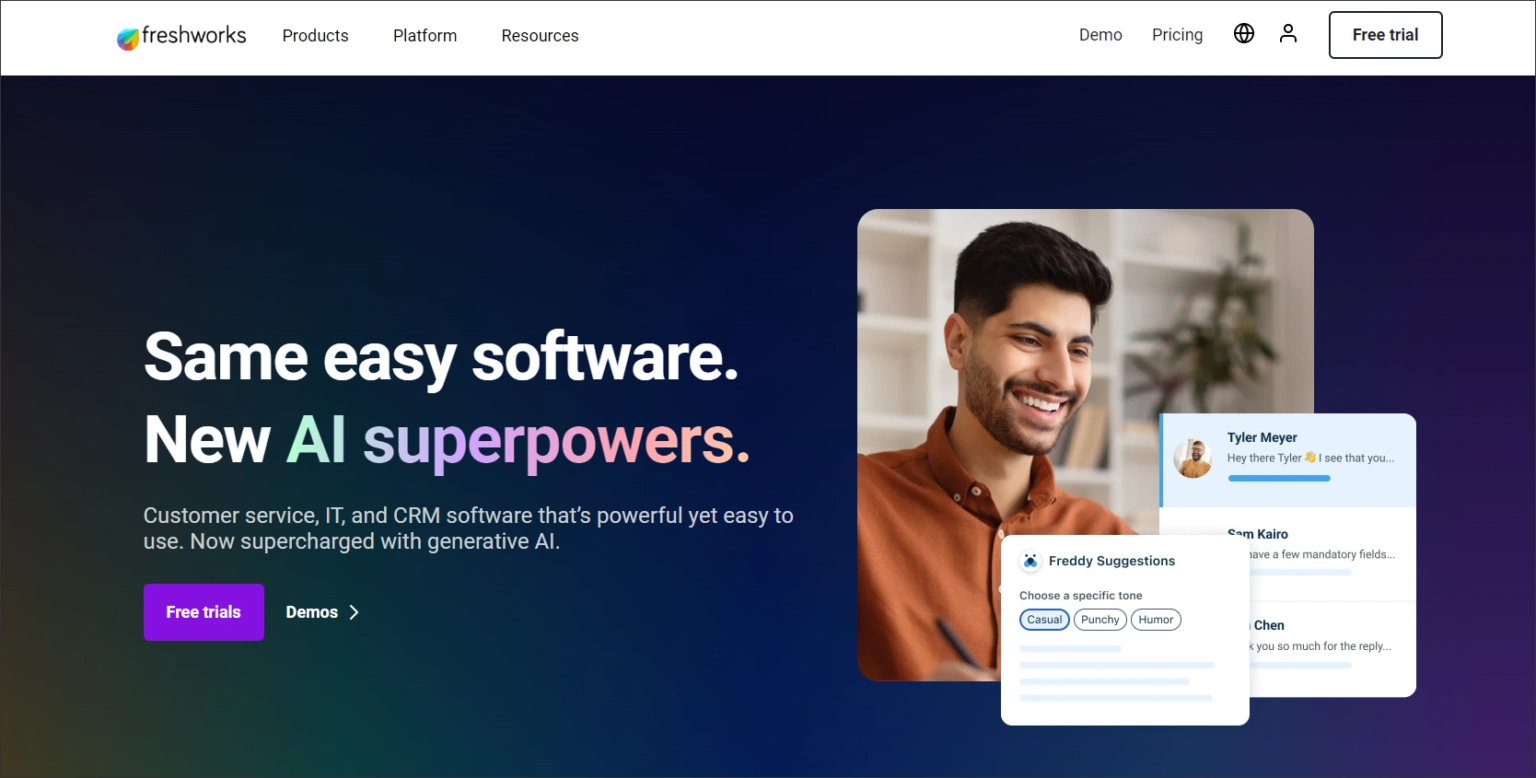
Features
- Ticket routing
- Round-robin routing
- Collision detection
- Custom reports and dashboards
- Knowledge base approval workflow
Pricing
- Free: Up to 10 agents
- Growth: $15 per agent/month
- Pro: $49 per agent/month
- Enterprise: $79 per agent/month
Free trial: 21 days
5. HappyFox
HappyFox is customer service software that offers multiple automation features that help businesses reduce support costs and enhance team productivity. It offers integration options and automated notifications and alerts, so everyone stays informed about the tickets created, customer responses, and other key actions.
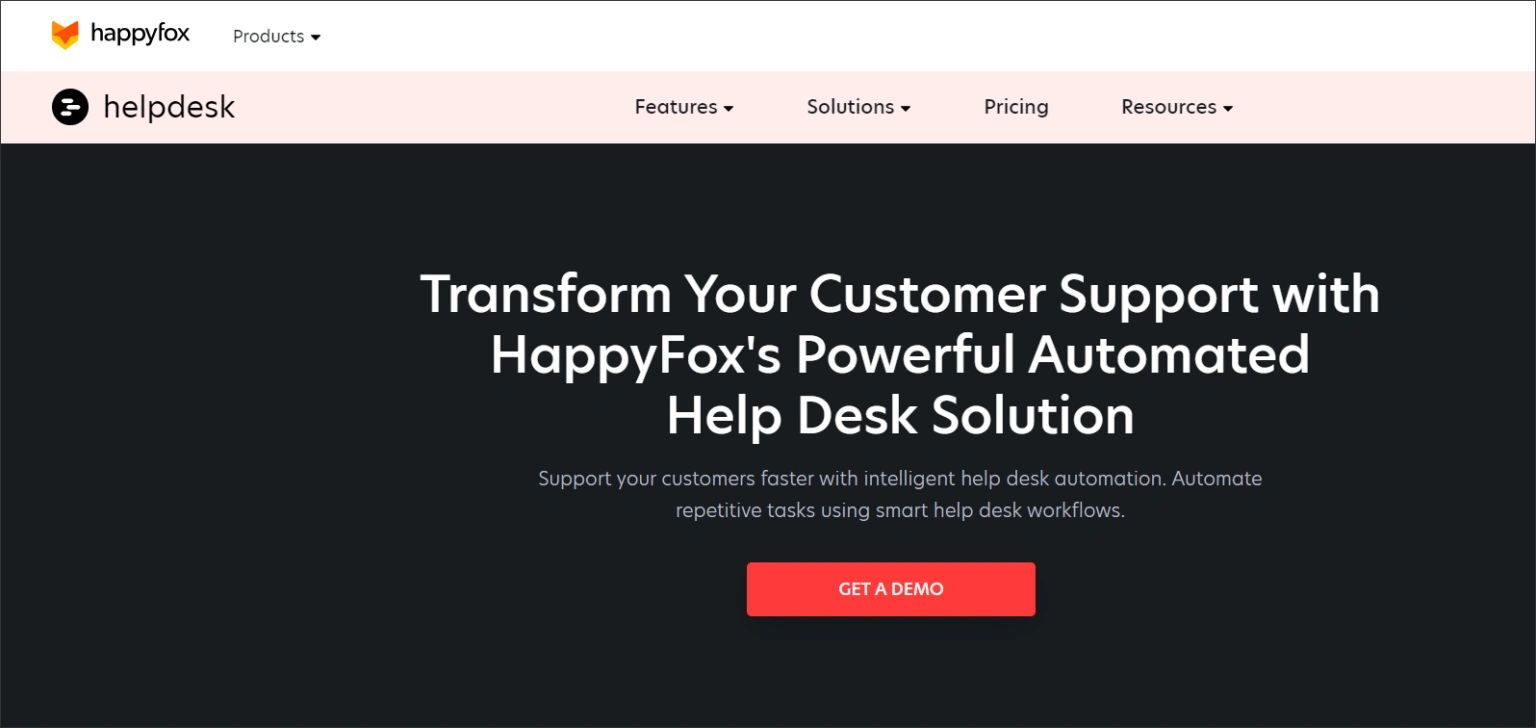
Features
- Automatic ticket escalation
- Automatic ticket assignment
- Templates
- Satisfaction surveys
- Knowledge base software
Pricing
- Mighty: $29 per agent/month
- Fantastic: $49 per agent/month
- Enterprise: $69 per agent/month
- Enterprise Plus: $89 per agent/month
Free trial: 14 days.
6. HelpDesk
HelpDesk is a ticketing system that allows users to develop personalized automated workflows depending on specific conditions and actions. The platform also automatically distributes tickets to agents based on their department, specialized skills, or area of interest.
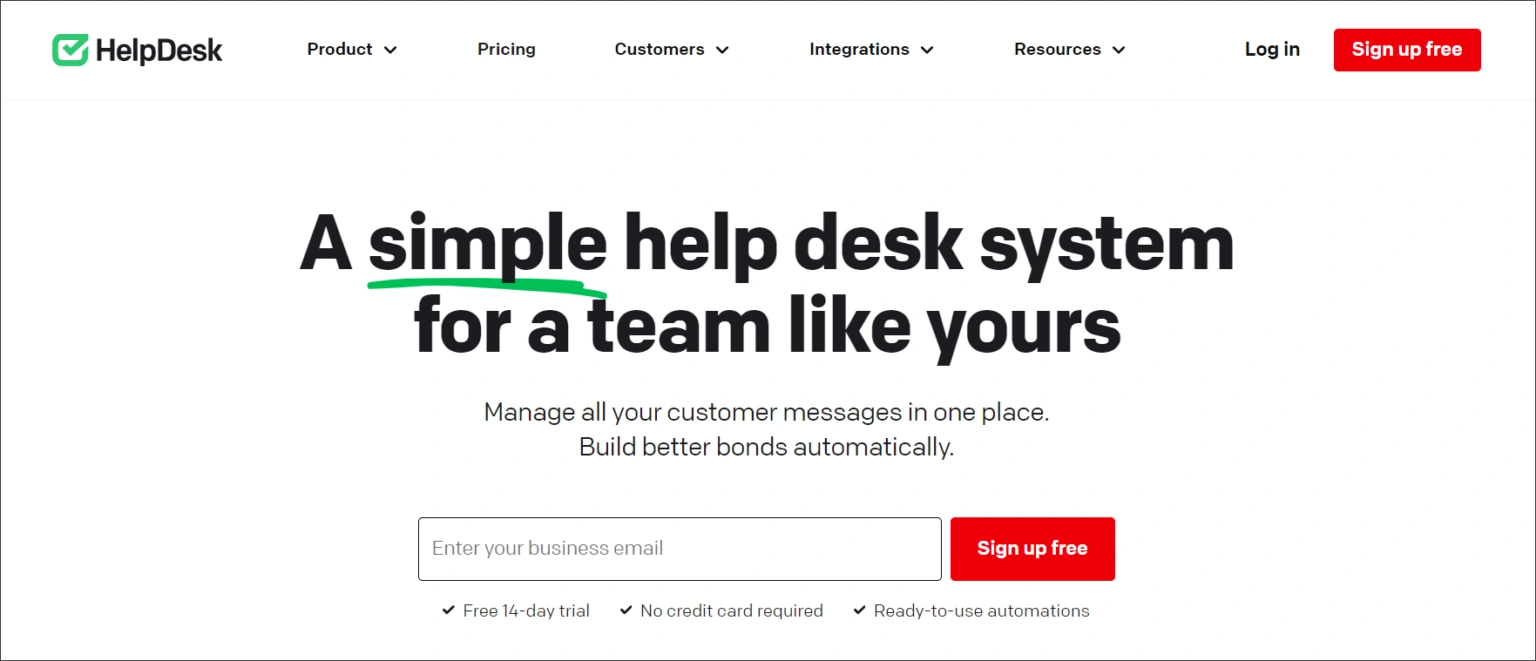
Features
- Workflow automation
- Reporting and analytics.
- Automatic ticket prioritization.
- Canned responses.
- Customizable email templates.
Pricing
- Team: $29 per agent/month
- Enterprise: Contact sales team
Free trial: 14 days
Unlock productivity gains with help desk automation
Using these IT help desk automation ideas in a service desk such as BoldDesk can improve your customer service. Clients will have a good experience, and agents will be more productive. It is key to use help desk automation with the right qualities for the best customer service.
We hope you found this blog helpful. Have more help desk automation ideas? Please share in the comment section below.
Related articles


















 Email Ticketing System
Email Ticketing System Shared Inbox Software
Shared Inbox Software Multi Brand Help Desk
Multi Brand Help Desk Internal Help Desk Software
Internal Help Desk Software Trouble Ticketing Software
Trouble Ticketing Software Mobile Help Desk
Mobile Help Desk 










